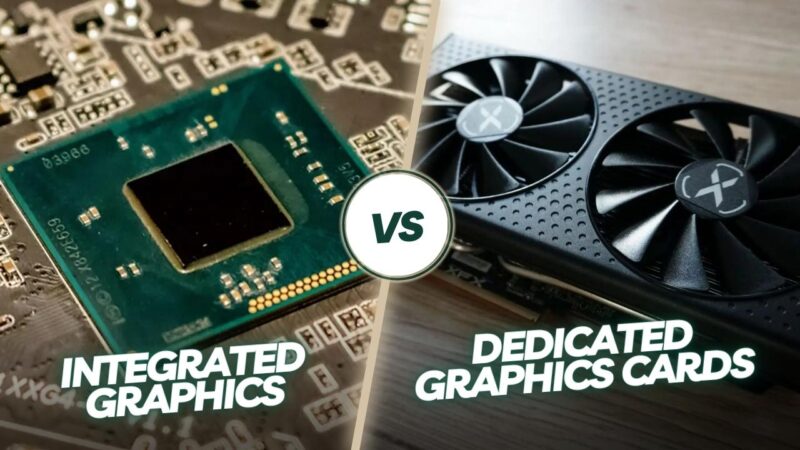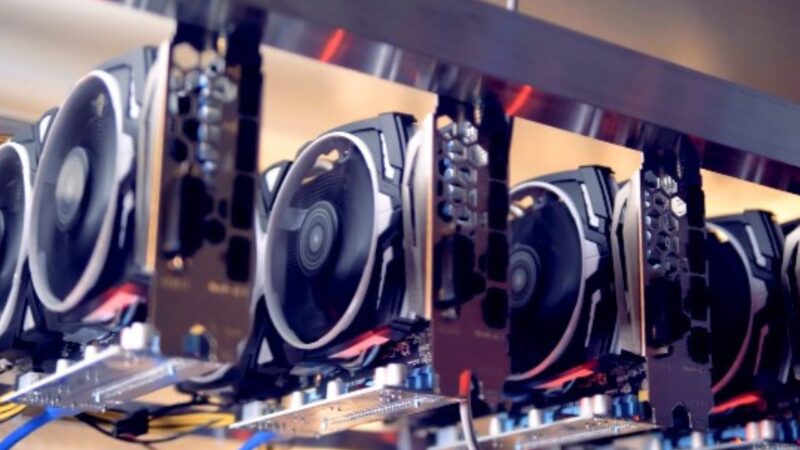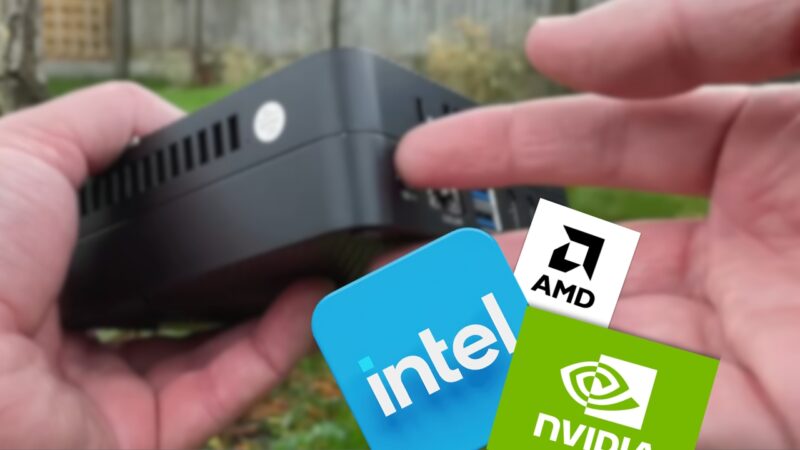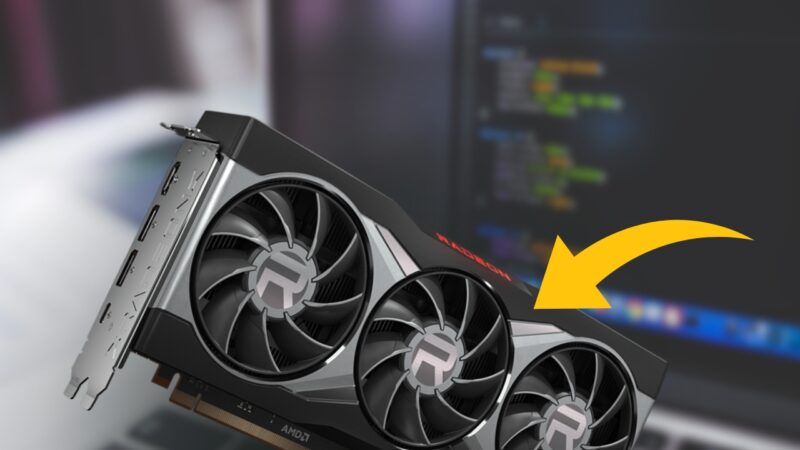The role of graphics processing in modern computing is something that is often understated but is incredibly vital to a smooth and visually pleasing user experience. Whether you’re gaming, editing videos, or even just browsing the web, the graphics card in your PC plays a crucial role in rendering the images and animations you see on your screen.
I remember the day I upgraded for the first time. The choppy gameplay, the slow rendering – it was a frustrating experience. Installing a dedicated graphics card, the difference was night and day.
Integrated Graphics vs. Dedicated Graphics Cards

Definition and differences
- Integrated Graphics are built into the processor and share memory with the system’s RAM. They are cost-effective and energy-efficient but offer limited performance.
- Dedicated Graphics Cards, on the other hand, are separate components with their own video memory (VRAM). They provide higher performance and are suitable for graphics-intensive tasks.
| Manufacturer | Key Features | Price Range | Notable Series or Products |
|---|---|---|---|
| ASUS | High quality, robust products; ASUS ROG STRIX Graphics Cards; a bit expensive | Mid to High | ASUS ROG STRIX |
| MSI | High-performance graphics cards; TWIN FROZR VI cooling solution; similar pricing to ASUS | Mid to High | MSI TWIN FROZR VI |
| Gigabyte | Cost-effective; AORUS brand graphics cards; cheaper than ASUS and MSI | Budget to Mid-range | Gigabyte AORUS |
| EVGA | High-quality Nvidia Graphics Cards; limited availability outside America | Mid to High | EVGA Graphics Cards |
| Zotac | Affordable Nvidia Graphics Cards; budget to high-end range | Budget to High | Zotac Graphics Cards |
| Galax | Affordable and reliable Nvidia graphics cards; known as KFA2 in Europe | Budget to Mid-range | Galax Graphics Cards |
| PNY | Gaming and workstation graphics cards for Nvidia; well-priced | Budget to Mid-range | PNY Graphics Cards |
| Palit | Mainly makes Nvidia Graphics Cards; fairly popular brand | Budget to Mid-range | Palit Graphics Cards |
| PowerColor | AMD Radeon Graphics Cards manufacturer; good brand for AMD | Mid-range | PowerColor Graphics Cards |
| Sapphire | AMD Radeon graphics cards; popular brand for AMD | Budget to High | Sapphire Graphics Cards |
| Inno3D | Chinese manufacturer of Nvidia Graphics Cards; good performance | Budget to Mid-range | Inno3D Graphics Cards |
| XFX | Makes AMD Graphics Cards; great performance and features | Mid-range | XFX Graphics Cards |
| ASRock | Known for motherboards; AMD Radeon Gaming Graphics Cards; Phantom Gaming series | Budget to Mid-range | ASRock Phantom Gaming |
| AFOX | Manufactures both Nvidia and AMD graphics cards; budget to high-end categories | Budget to High | AFOX Graphics Cards |
Pros and cons of integrated graphics
| Pros | Cons |
| Cost-effective | Limited performance |
| Energy-efficient | Not suitable for graphics-intensive tasks |
| Suitable for basic computing tasks |
Pros and cons of dedicated graphics cards
| Pros | Cons |
| Higher performance | More expensive. |
| Suitable for graphics-heavy tasks | Higher power consumption |
| Upgradable |
Graphics-Intensive Tasks

Gaming
With the rise of modern gaming, a robust graphics card is essential for rendering intricate game environments, fluid character movements, and realistic special effects. Without one, gamers may face sluggish performance and reduced visual quality.
Video editing and rendering.
They accelerate video editing software, allowing editors to preview effects in real-time and render high-quality videos faster.
3D modeling and animation.
3D artists rely on graphics cards for rendering complex models and animations. The right GPU can significantly decrease the rendering time, enhancing productivity.
[su_note note_color=”#93e6b7″]Pro Tip: Investing in a dedicated graphics card can greatly improve the experience in graphics-heavy tasks, especially if you’re working with professional applications or modern video games.[/su_note]
System Requirements
Different tasks demand different levels of graphical power. Understanding the minimum and recommended system requirements for your specific needs can guide your graphics card choice.
Additionally often the bottleneck in system performance for graphics-heavy tasks. Upgrading can provide a significant boost to the overall system performance.
[su_note note_color=”#93e6b7″]Interesting Fact: The power of graphics cards has grown exponentially; the top-tier cards today offer more than 10,000 times the performance of early GPUs.[/su_note]
Integrated Graphics Performance in Modern PCs

Integrated graphics have come a long way, now offering decent performance for casual tasks and light gaming.
Modern integrated graphics can handle tasks like web browsing, document editing, and even some light gaming without significant issues.
The Need for Dedicated Graphics Cards
- Dedicated cards are essential for high-end gaming and virtual reality (VR) experiences. They provide the power needed to render complex scenes at high resolutions and frame rates.
- For professionals working in fields such as video editing, 3D modeling, and scientific simulations, dedicated graphics cards are not a luxury but a necessity, offering the computational power required for these demanding tasks.
- Driving multiple monitors or high-resolution displays requires the additional resources that dedicated graphics cards provide.
[su_note note_color=”#93e6b7″]Pro Tip: If you are planning on high-end gaming, multi-monitor setups, or professional graphics work, investing in a dedicated graphics card is a must.[/su_note]
Graphics Card Options and Considerations
- They come in various performance and price levels, catering to different needs and budgets.
- Ensuring that the card is compatible with the motherboard and that the power supply can handle it is crucial for a stable system.
- Different cards require different cooling solutions and space inside the PC case, affecting the choice of components.
[su_note note_color=”#93e6b7″]Pro Tip: Checking compatibility and considering cooling and form factor early in the planning stages can save headaches during installation.
Graphics Card Brands and Ecosystems[/su_note]

There are several major players in the graphics card market, including NVIDIA, AMD, and Intel, each offering various product lines and features.
Manufacturers provide software and driver updates to optimize performance, add new features, and fix bugs, contributing to the overall graphics experience.
| Manufacturer | Key Features | Market Share (Q3 2021) | Notable Products |
|---|---|---|---|
| Intel | Dominates integrated graphics | 62% | Integrated Graphics Cards |
| Nvidia | Leader in discrete graphics, AI, self-driving partnerships | 18% (20% overall) | GeForce RTX 3090 TI, RTX 3080 |
| AMD | Competes in discrete graphics | 17% (discrete) | Radeon Series |
[su_note note_color=”#93e6b7″]Fun Fact: AMD and NVIDIA have been fierce competitors in the GPU market, with AMD focusing on providing value, while NVIDIA often leads in high-end performance.[/su_note]
Performance vs. Price Considerations
- Choosing the right graphics card is often a matter of balancing the need for performance with budget constraints. Understanding where to invest and where to save can lead to a satisfying purchase that doesn’t break the bank.
- Evaluating the price-to-performance ratio helps in selecting a graphics card that provides the best value for your investment.
Future Trends in Graphics Processing
The world of graphics card technology is constantly evolving, with new architectures, higher memory capacities, and more efficient designs continually pushing the boundaries.
Emerging technologies like cloud gaming and AI-driven optimizations might reduce the need for powerful local graphics hardware in some scenarios.
[su_note note_color=”#93e6b7″]Interesting Fact: Ray tracing, once a technology limited to high-end movie production, has become a feature in consumer graphics cards, offering real-time realistic lighting and reflections in games.[/su_note]
FAQ
What is a graphics card, and what does it do?
A piece of hardware that renders images, videos, and animations. It plays a crucial role in gaming, multimedia creation, and general computer operation.
Can integrated graphics be sufficient for everyday tasks?
Yes,they are suitable for basic computing tasks such as web browsing and document editing.
Will I need a dedicated graphics card for light gaming?
Light gaming can often be handled by modern integrated graphics, but a dedicated card will provide a smoother experience.
What tasks specifically require a dedicated graphics card?
High-end gaming, video editing, 3D modeling, virtual reality, and multi-monitor setups.
Conclusion
In the realm of personal computing, the importance of graphics processing is profound, directly impacting the smoothness, speed, and visual appeal of our digital experiences.
Whether your computing needs are basic or intensive, understanding the differences between integrated and dedicated graphics is crucial in shaping these experiences.
In this complex landscape of choices, evaluating your personal requirements, budget, and future plans can guide you to the right decision. Remember, the goal is not necessarily to possess the most powerful graphics card but to have one that fulfills your specific needs and enhances your computing journey.

